Carya glabra
(Pignut Hickory)
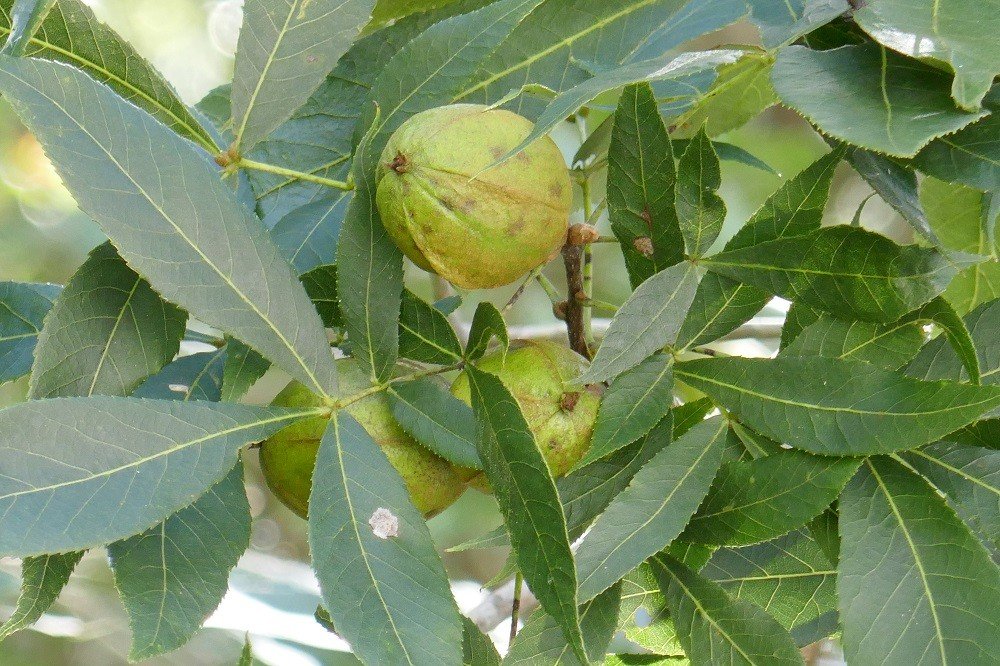
Common Names, Latin Name and Family
Some of its common names are pignut hickory, pignut, sweet pignut, smoothbark hickory, swamp hickory, broom hickory, coast pignut hickory, and switch hickory.
Its Latin name is Carya glabra.
It is found in the Juglandaceae, or walnut, family.
Form
Mature height varies from 70 to 100 feet. Pignut hickory is a common component of hardwood hammocks.
Carya glabra is the only documented hickory for Hernando County. It occurs in Citrus County along with mockernut hickory (Carya tomentosa) and water hickory (Carya aquatica). Pignut hickory is distinguished from other hickories by all parts of the leaves being glabrous with only occasional hairs in the vein axils.
Hickory is a very long-lived tree with a life span of up to 250 years. The crown of mature trees is relatively narrow and oblong. Limbs have a pendulous habit. The bark of mature trees is gray with shallow fissures in a pattern that is diamond shaped.
Leaves
Hickory trees are deciduous which means they lose their leaves in the fall and regrow them in late winter and spring.
The leaves are alternate, compound, and odd-pinnate, with five to seven leaflets and may be 8-16 inches in length.
Leaflets are lanceolate, elliptic or oval in shape with serrate margins, 1-2 inches in width and 3-6 inches in length.
Carya glabra leaves are distinguished from other hickories by the lack of hairs (glabrous) or occasional small tufts of hairs in the vein axils on the lower surfaces.
The leaves turn yellow in the fall before they drop.
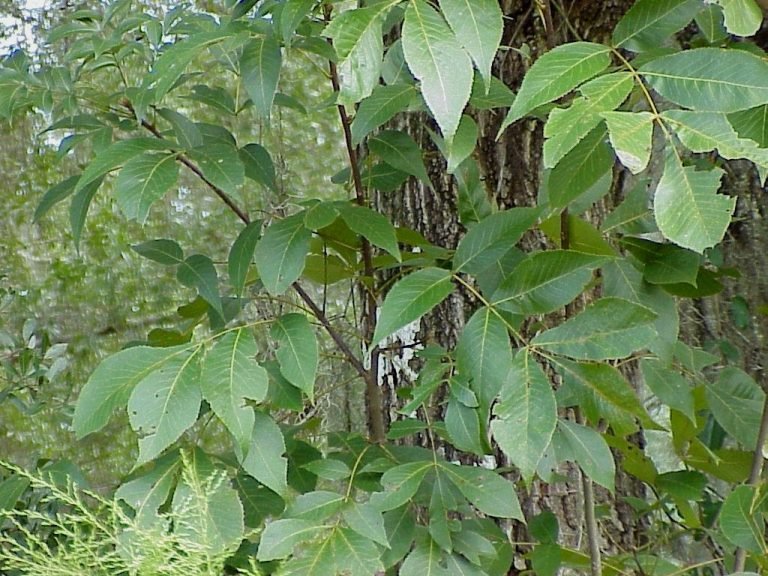
Flowers
Hickory trees are monoecious which means that male and female flowers occur on the same tree.
The flowers appear in the spring.
Male (staminate) flowers are 2-3 inch long catkins and are born in the leaf axils on growth from the previous season and appear before the female flowers.
Female (pistillate) flowers appear in two to five flowered spikes and are born from shoots of the current year.
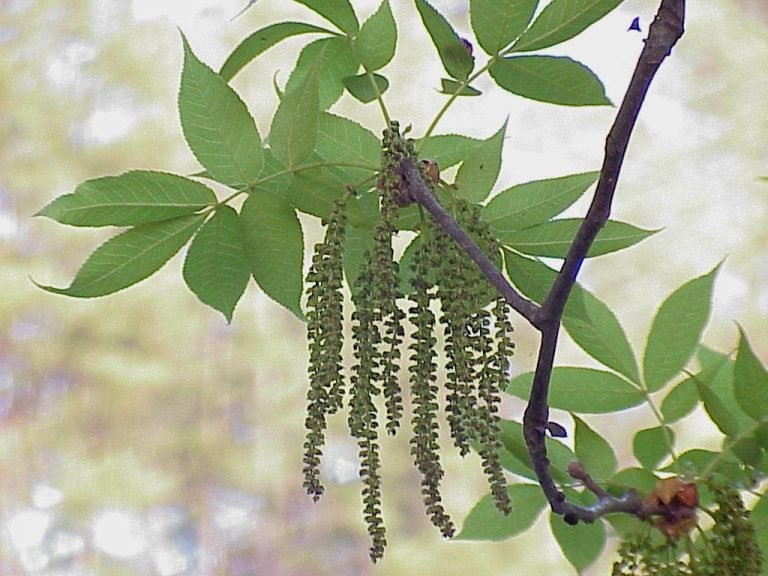
Fruit
Nuts are not produced until the tree is approximately 30 years of age and peak production occurs from 75 to 200 years of age.
The nuts are edible, but the palatability differs from tree to tree.
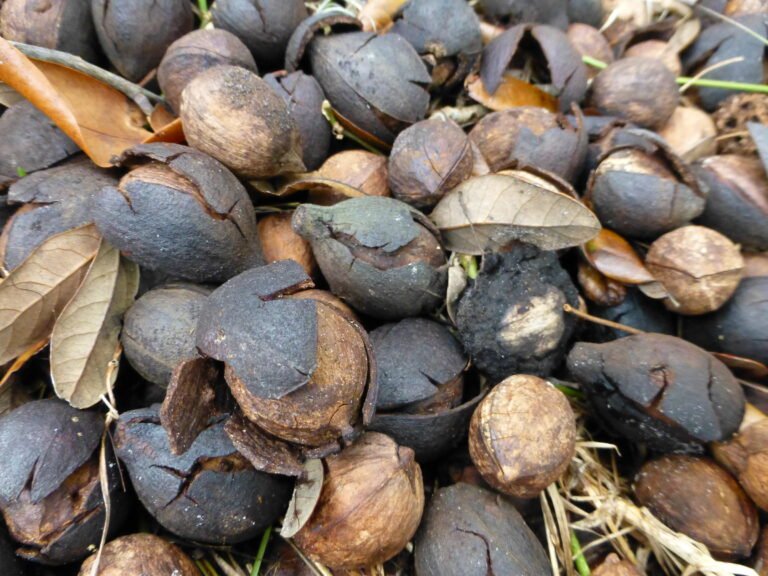
Habitat
Pignut hickory is a common component of hardwood hammocks in our area of central Florida and can be found growing in hammocks that range from xeric (dry) to mesic (moist).
Native Range
It is found in Florida in the northern part of the state and as far south as Charlotte County.
It is generally found throughout the southeastern United States.
Landscape Use
Pignut hickory makes a great upper canopy tree for a wildlife habitat, or food forest, because hickory is a very long-lived tree with a life span of up to 250 years and a mature height of up to 100 feet.
The crown of mature trees is relatively narrow and oblong. Limbs have a pendulous habit. The bark of mature trees is gray with shallow fissures in a pattern that is diamond shaped.
Pignut hickory grows in full sun with average moisture. Since it is an upper canopy tree it needs its own space to grow.
Yes, it does drop leaves and nuts but if you are planting for a food forest or for the wildlife it is a perfect tree choice.
It also has beautiful fall foliage which adds interest and color change in the landscape.
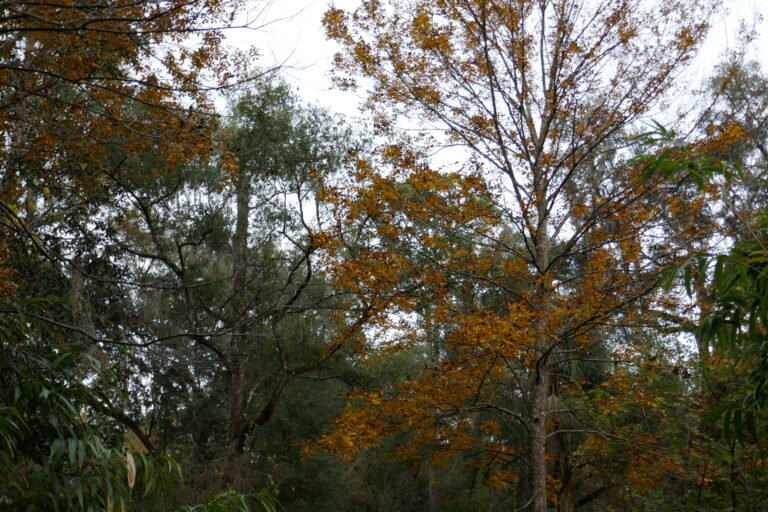
Wildlife Use
Hickory trees provide food and shelter for a variety of wildlife.
In our area of central Florida the gray foxes and flying squirrels use the nuts and leaf buds as a staple food source and build nests within the limbs.
Deer and other mammals may occasionally browse the foliage.
Many birds forage on the insects that are attracted to the spring flowers and use the foliage for shelter and nesting.
Hickory is a larval food for a number of giant silk moths including the luna moth, polyphemus moth, and the royal walnut moth.
Tent caterpillars can be found in silken ‘tents’ among the foliage in the spring. They do not harm the tree and actually provide an important food source for many birds and their nestlings, specifically yellow billed cuckoos.
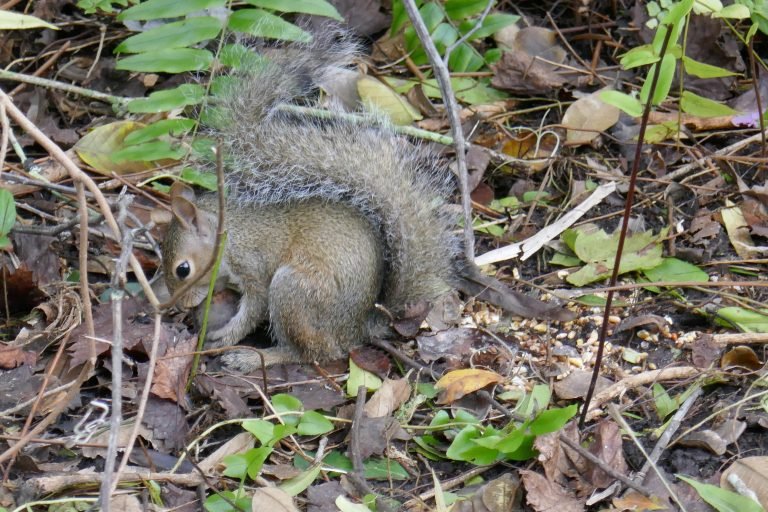
Human Use
Hickory nuts were a staple food source for Native Americans. Gathered in the fall they were eaten out of hand and processed to make a form of ‘butter’ and a ‘milk’ type liquid that were used in cooking. Many were also stored for future consumption.
The nuts are small and delicious and can be very labor intensive to remove from the edible meat from the shell. It can be done but takes a lot of work. When I conducted Wild Edible programs at Chinsegut Nature Center I would gather a handful of friends to help with picking out the nut meat. We would meet at Tillis Hill and my friend Sid Taylor would grab some volunteers to help. The end product of a pignut hickory pie made all the work well worth it.
The inner bark of the hickory tree was also used to make cord and rope.
The bark, twigs, and hulls of the nuts can be used to produce a brown dye.
The limbs and twigs, when dry, produce a delicious smoke if you are into smoking foods with natural wood. I like to break up small limbs, and twigs, and put them in a smoker box to add flavor to my grilled food.
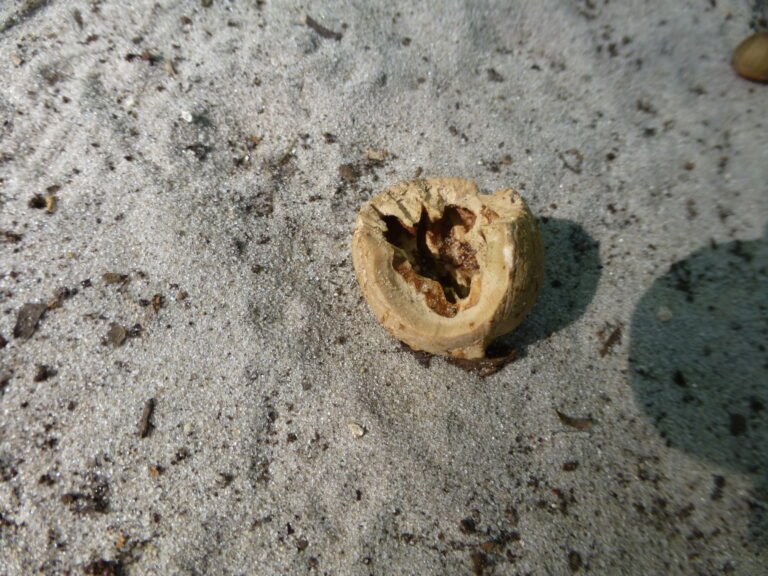
Propagation
It can be grown from seed or transplanting seedlings of just about any size.
My preferred method of germinating the nuts is to let the squirrels bury them for me and when the new seedling appears I transplant it to a pot. The squirrels seem to have a knack for planting viable nuts whereas I am not always lucky in that way.
When transplanting be sure to remove any nuts or flowers so the tree can use its energy for recovering from the move. Keep it watered until you see new growth and then it should be fine on natural rainfall.
Bibliography
Brown, Robin C. Florida’s First People. Pineapple Press: Sarasota, FL. 1994
Godfrey, R.K., and J.W. Wooten. Trees, Shrubs, and Woody Vines of Northern Florida and Adjacent Georgia and Alabama. University of Georgia Press: Athens, GA 1988
Martin, Alexander, et al. American Wildlife & Plants: A Guide To Wildlife Food Habits. Dover Publications: New York, NY. 1951
Nelson, Gil. The Trees of Florida. Pineapple Press: Sarasota, FL 1994
Wunderlin, Richard P. Guide to the Vascular Plants of Florida. University Press of Florida: Gainesville, FL. 1998
Next Article: Red Buckeye
